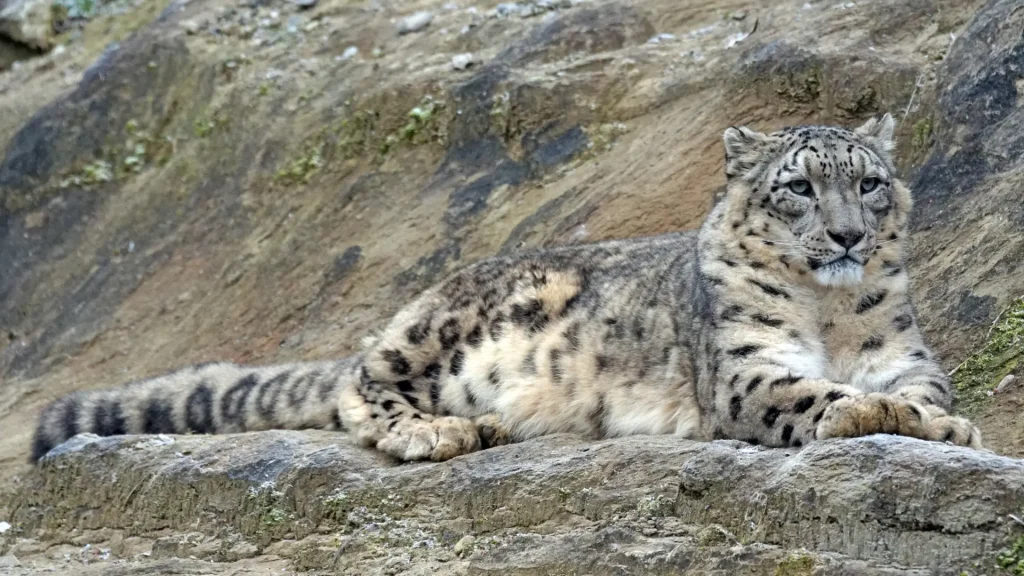Tracking the Ghost in Spiti: A Contrapuntal Exploration with Ladakh
It is said that snow leopards are ghosts of the mountains—elusive, silent, living in a geometry of rock and snow where human certainty falters.
In the austere hush of Ladakh’s trans‑Himalayan ridgelines, the snow leopard (Panthera uncia) reigns as a phantom — elusive, fiercely silent, and deeply revered. But in Ulley, a small hamlet perched at around 13,000 feet in central Ladakh, dedicated trackers and communities are rewriting that narrative. Here, one might glimpse the “Gray Ghost” in all its majesty — or at least feel its presence in every whipped gust of Himalayan wind.
Ulley is no ordinary basecamp. It is a remote valley outpost beyond the Indus, hosting a handful of stone-built houses, yak pastures, and a sleep‑soft landscape of crags and gullies. It has been purposefully developed over the last decade as one of India’s foremost snow leopard tracking zones: not just for its high incidence of sightings, but for its capacity to blend community, conservation, and comfort.
What makes Ulley special is that it is not a sanitized “wildlife park,” but working land — where shepherds tend livestock, and where apex predators once triggered fear and retaliation. But conservation here has taken a different turn. Through community-based tourism, revenue from tracking expeditions flows directly into local households, creating incentives for protection rather than persecution.
Moreover, the terrain is generous in its scale: several valleys are accessible by motorable roads, enabling broader coverage through dedicated vehicles. That, combined with human intelligence — tips from villagers, alarm calls of prey animals, and the perceptive gaze of local trackers — sharpens the search.

Tracking a snow leopard is less a pursuit than a negotiation with patience, fortune, and wilderness logic. As the lodge’s experience page describes, the trackers assemble intelligence from multiple layers: usually a tip-off from villagers, then signs in the field — alarm calls, the behavior of scavengers like vultures or foxes, or tracks in snow.
One of the most arresting scenes is watching Norbu or an expert tracker, scanning ridgelines through a Zeiss telescope. His body becomes still, his focus absolute — every rustle, every shadow is potential. Sightings often arrive not as grand reveals, but as hints: the top of a head behind stone, a swish of tail across a precipice. These are small miracles in a domain that refuses easy conquest.
Snow leopards rarely “sell themselves cheaply,” as the lodge’s narrative puts it. Every sighting demands stamina, resolve, and reverence. The high cold distances, the wind-lashed slopes, even approaching through telescopic lenses — the wild tests you. But when the ghost appears — perched on a crag, surveying its domain — time stops.
While the snow leopard is the marquee draw, Ulley delivers more than that. Ibex, urial, Himalayan wolf, red fox, bearded and Himalayan vultures, golden eagles — these are frequent companions on the same ridges. Birders and naturalists often find themselves as enthralled by griffon vultures spiraling overhead as by spotted cats.
Even the absence of sighting becomes part of the narrative: it magnifies wilderness presence, underscores how entire landscapes survive beyond our gaze. The stories are as much about what is invisible as what is seen.
There is a paradox in snow leopard tracking: you go seeking a spectacle, but you live the in-between. Each morning opens with steaming chai and ropes of hope. Days are spent scanning distant slopes, adjusting for the angle of light, trusting that the right ridge will yield. Evenings bring presentations, conversations, and laughter around candlelit stoves while outside, the wind hunches over white peaks.
The quiet becomes a teacher. You start hearing wind-shredded dances of snow, listening for calls that are too faint. Your eyes become tuned to contrast — a patch of white fur against pocked rocks, or a silhouette at the right moment. Over time, the forest atmosphere — the ambient vibration of solitude — creeps in, and your internal compass shifts.
One of my companions once remarked: “Tracking a snow leopard is like flirting with gravity — you never know when it’ll let you up close, or vanish you back into distance.” I laughed then, but I live that metaphor now. The sleight between visibility and absence, between whispered wind and sudden motion — it summons humility.
You come thinking you’re going to find the leopard. But often, the leopard is quietly finding you. It teaches you to soften, to listen, to let the wild insinuate itself into your edges. At Ulley, the question isn’t just can I see it, but can I belong enough to the land that it trusts me?
By the end of the expedition — whether you secured the cat in your lens or not — you carry something rarer: a humility in the face of endurance, a sharpened gaze, and a tether to wild logic. You leave Ulley not with a trophy image, but with a story stitched in silence, memory, and reverence.
If you ever think nature is conquered, promise me you’ll try tracking in Ulley once. It will remind you how small you are, and how infinitely more alive.